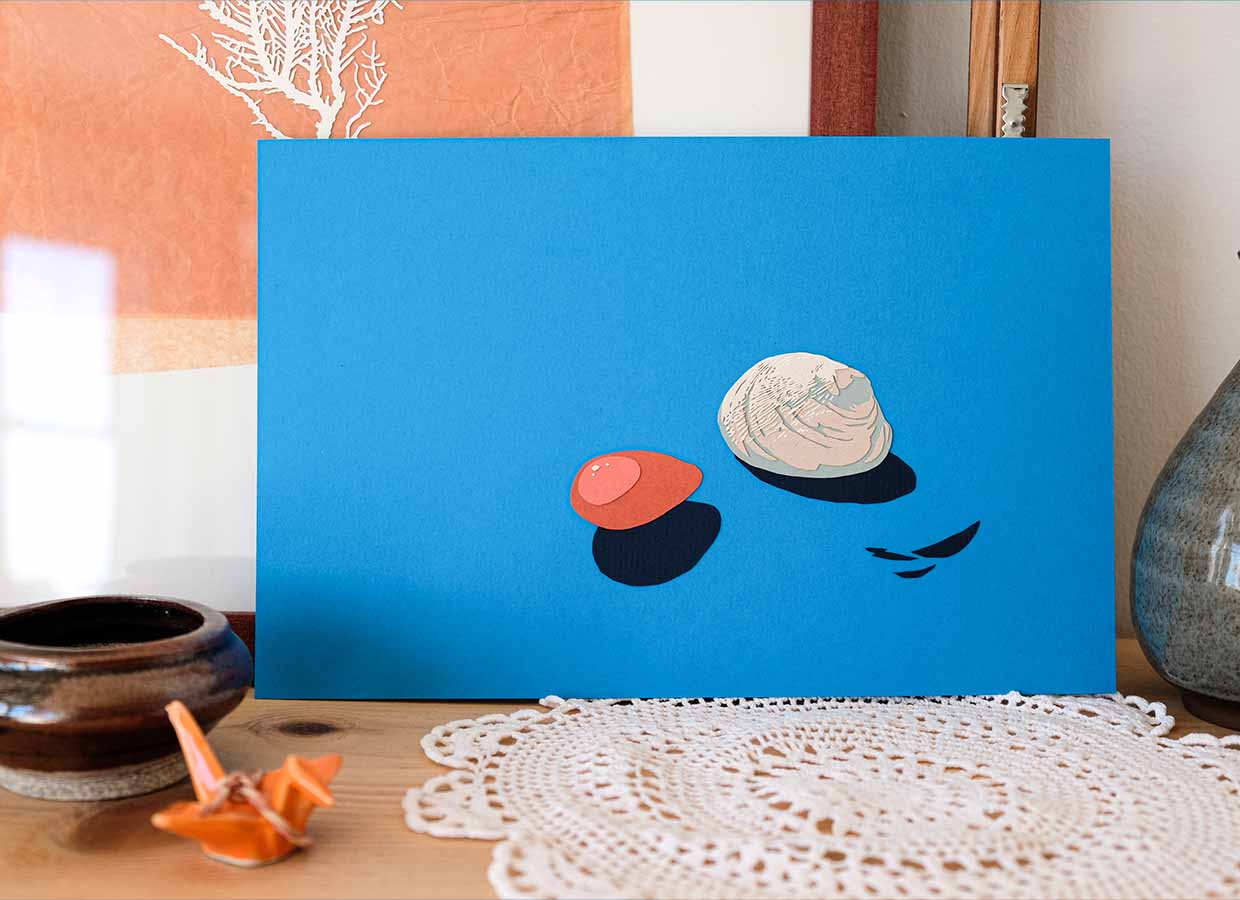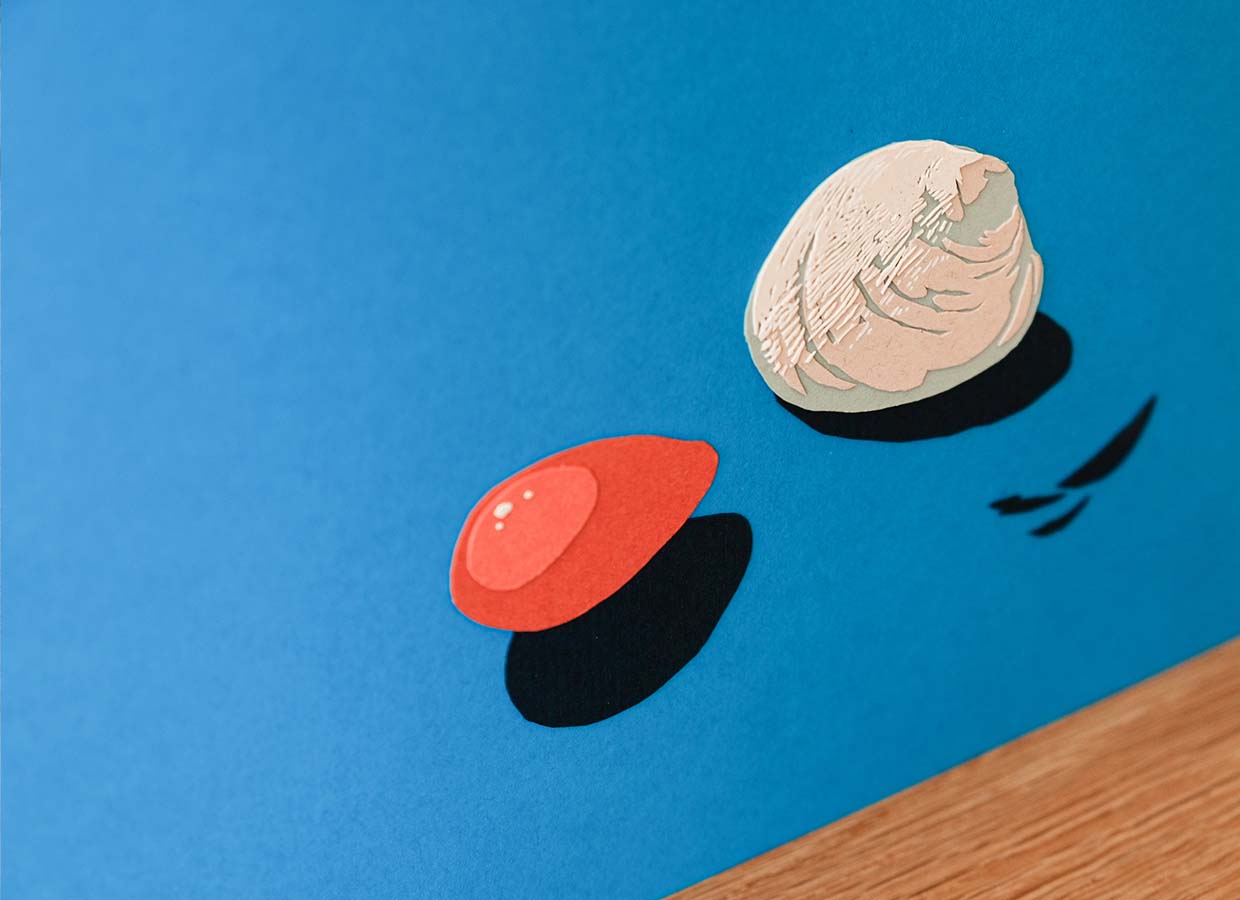(02.12.2023)
Sea Treasures
Dimensions
10″ × 6.5″
Materials
Cover-weight paper stock; acid-free paper adhesive


I don’t usually depict objects in my work. I gravitate towards making artwork of things that I can’t hold in my hands: rolling lands, broad skies, transient clouds, and the traces of people passing through it all. There’s something about a sense of place and its mood that can’t quite be captured by a single thing. Even if I could take a rock or a leaf with me, it wouldn’t capture the experience of being there. At most, it’d be a vessel for holding on to a memory.
But sometimes I see something breathtaking enough that I’m compelled to collect it. I can’t capture every facet and nuance that makes the object so distinctive with paper, pencil, or even a photo.
Do I take it for my personal enjoyment? Or do I let nature keep it to do what she will with it?
I came across these two sea treasures on a beach near Santa Barbara. They were whole and unblemished, soft white and deep sea amber. They glittered in the sun. Even the way the fine sand washed around them was exquisite. I crouched down near them, drinking them in with my eyes. I rasied my camera to my eye and pressed the shutter—once, twice, shifting a bit before one last click—then lowered the camera from my face. I didn’t want the flattened image, but the real thing.
I poked them with a tentative finger. The bulb of the Macrocystis pyrifera gave slightly beneath my fingertip, velvety soft but firm like it held the strength of the ocean. Its glossy sheen lessened slightly when I pulled my finger away. The shell was hard like the earth’s skeleton, and faintly warm as if it was part of a larger body. Its ridges created a tactile fingerprint. Nearby, a tiny tangle of bleached coral glittered, drawing my eye to more treasures sprinkled on the sand’s surface like markings on a vast skin.
If I spirited these fragments home with me to create a collection of naturalist’s curios, would they lose the lifeblood they have here?
California state park rules declare: “NATURAL SCENERY, PLANTS AND ANIMAL LIFE are the principal attractions of most state parks. They are integral parts of the ecosystem and natural community. As such they are protected by Federal, State and Park laws. Disturbance or destruction of these resources is strictly forbidden.”
Of course, many people don’t heed these rules on public lands. They know no one will come after them and the treasures they stole, even if someone were to observe the transgression. It’s just one small shell; one or two round pebbles; one little flower petal; one drying leaf from a place with innumerable more.
But each of these is a part of a larger community. If I take even the smallest piece, I will remove something that I likely cannot fathom, from a network whose size and power is beyond my comprehension.
In the end, I straightened myself back to standing, hands my by side. My palms remained empty.